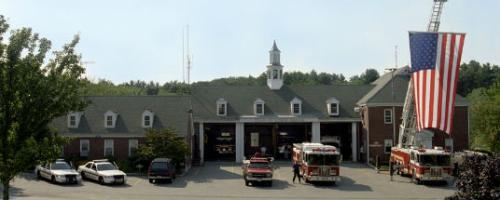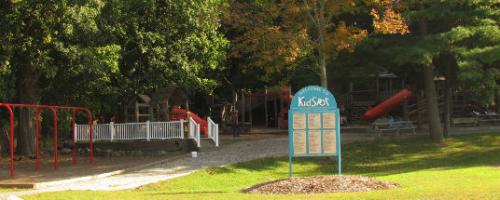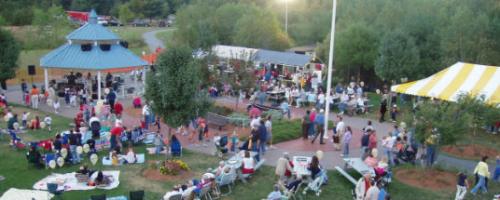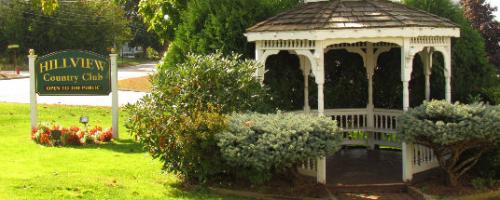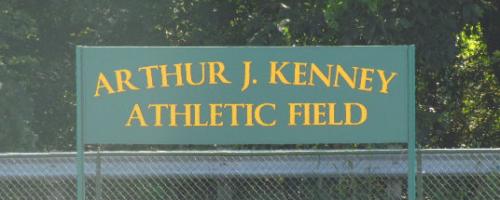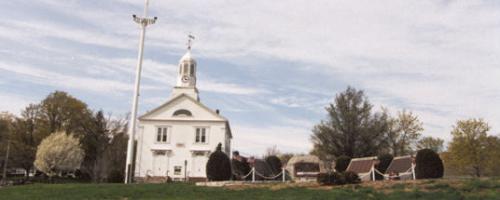MBTA Communities/3A Compliance
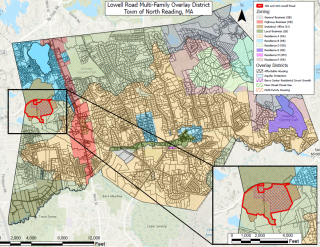
What is the new "MBTA Communities" statute?
In Massachusetts, a new section 3A of the Zoning Act was signed into law in January 2021. In 2022, the state released guidelines for communities explaining the new requirements. This new part of the Zoning Act requires cities and towns within the MBTA's service area, or "MBTA communities," to have at least one zoning district that allows multifamily zoning by right.
Does this apply to North Reading?
Yes. The law includes MBTA adjacent communities, even if they have no service within their borders. North Reading is an example of an adjacent community. While there is no MBTA service within the Town, we are adjacent to Wilmington, Reading and Andover, all of which have MBTA commuter rail stations. Therefore, we need to comply with the statute. The state has published a map of MBTA Communities that need to comply with the law.
Does this mean we are getting MBTA service?
No, it just means we need to meet certain zoning requirements because we are within the general service area provided by the MBTA.
How did North Reading become an MBTA community?
A number of private companies operated various bus and trolley lines in the suburbs of Boston, including North Reading, up until 1964. In that year, the Commonwealth abolished the old Metropolitan Transit Authority, which had operated transit in Boston and the inner core cities and towns, and replaced it with the Massachusetts Bay Transportation Authority. By an act of the Legislature in 1964, the new MBTA subsumed the various transit systems that had existed in 64 suburbs, including North Reading.
From 1964 through the 1970’s, the MBTA operated the 318 and 137 bus routes in North Reading intermittently, with changes, cuts and experimental new additions to service due to changes in ridership. This included service from Lawrence to the Andover line, and also to the former Everett station at what used to be the northern end of the orange line.
The bus lines were eventually discontinued, but North Reading remains a community adjacent to MBTA commuter rail stations and has therefore paid an assessment to the MBTA for decades for this geographic privilege. A more detailed history these assessments and of transit service in North Reading is provided in this memo, which was prepared in part based on information from this article explaining the history of MBTA routes. Additional detail can be found in this Wikipedia article.
What do we need to do to meet the MBTA Communities requirements under 3A?
To meet the state's requirements, North Reading must have a zoning district of at least 50 acres (or multiple districts of 5 acres each, adding up to 50 acres; at least one of these must be 25+ acres). This district must allow multifamily housing by right, meaning it can't require a special permit for multifamily projects to be built.
This presentation from the Massachusetts Municipal Association gives further detail about the law.
What is multifamily housing?
Multifamily is defined by the state as 3+ units per structure.
What are the other requirements for the district?
The Town is required to make sure its zoning district could meet certain criteria for density, if it were to be built out. This has nothing to do with what may be located in the district already. We are expected to zone for a future scenario where the properties could be completely redeveloped. Under that scenario, we are asked to make certain calculations to be sure we meet the state's requirements. These include:
The minimum gross density must be 15 units/acre.
The zoning needs to allow a capacity of at least 750 multifamily units by right (this does not mean we need to build 750 units, only that the district could provide for them if it were newly redeveloped).
Land needs to be developable to count (i.e., it cannot be floodplain, water, wetlands or public land).
The zoning can’t restrict age or number of bedrooms. This does not mean the zoning district can't contain projects that happen to be age-restricted. It simply means the zoning can't require projects to be age restricted.
What if the Town doesn't have the infrastructure to support new development? Are we expected to provide it?
The law is concerned with what the zoning allows, not what will be built. There is no requirement for towns to actually produce the housing associated with this zoning or to provide infrastructure to service it.
What if the Town does not comply?
A major consequence of not complying with the new statute would be becoming ineligible for funding for many of the state’s grant programs. Additionally, the Attorney General's office released an advisory in March of 2023 clarifying that 3A is in fact a mandate and communities do not have the choice to not comply and simply forgo state funds.
What is our deadline for compliance?
December 31, 2024.
How is the Town proposing meeting this requirement?
The Community Planning Commission and Select Board have discussed a zoning overlay proposal that utilizes properties that are already zoned for multifamily housing by right, with no age restrictions, at a density level and with a number of units that already exceeds the state's requirements. 100 Lowell Road (site of Edgewood Apartments) and 104 Lowell Road/Berry Way (site of the Residences at Martins Landing) have already been permitted and are in the process of being built out with housing developments that closely mirror the requirements in the proposed new overlay zoning district. This proposal minimizes the actual physical changes that could be made as a result of meeting the state's requirements. This is the least impactful solution possible that still would comply with the new law.
Three zoning bylaw changes are proposed:
1. An article to establish an overlay district containing 100 and 104 Lowell Road. Within that overlay, the proposed number of stories is 4.5 rather than the currently allowed 4.0. This adjustment allows us to meet the state's "unit capacity" requirements. The height limit currently in place, 60 feet, would remain unchanged. For new/redevelopments of 10 or more units, 10% of new units must be affordable. The text of the bylaw is linked here.
2. An article to clarify site plan review procedures, establishing that they act like a special permit but are not true special permits.The state will not allow us to require a special use permit in this district, and we need to make it clear that we are not requiring one. The text of this bylaw amendment is linked here. To see how the final zoning text would look after the changes, the redlined changes can be viewed here.
3. An article to update the date of the Town's zoning map, which needs to be done whenever a map amendment occurs. The text of this bylaw amendment is linked here.
What are the other possible impacts to these two sites?
100 and 104 Lowell Road are both quite restricted due to being located in an Aquifer Protection District, and this is not proposed to change. The APD limits by-right development to 15% impervious surface. Beyond that point, a special permit is needed. Both developments do already exceed that threshold based on previous special allowances for when those project were approved, and for that reason, the new zoning could not enable development that expands the buildings' footprints. Rather, the only way to expand on the current developments under the new zoning would be to build upward, or to rebuild the sites anew. The height restriction for these properties is currently 60 feet and four stories. The Edgewood Apartments have three stories, while Martins Landing has a combination of four and five-story buildings.
How are the owners of 100 and 104 Lowell Road impacted by this?
It is important to note that the proposal adds allowances to the properties' zoning only and does not propose any actual construction. No new project is required or proposed as part of this zoning proposal. The proposal allows for changes in the number of stories on existing developed sites but does not in any way mandate changes to the site. As has always been the case, the decision to propose new construction, additions, redevelopment or any other change to the sites is at the discretion of the owners. The new state requirements, or the Town's proposed zoning response to those requirements, do not mandate or authorize any changes to any property in the Town without the owners' full consent and initiative.
How can the zoning allow 4.5 stories? What's half a story?
An example of a half story would be a top floor that had a sloped roof and no dormers. It would be estimated to have about half the units of a full story.
Why is the state asking us to raise the height limit of these buildings?
The state doesn't specifically have any particular height requirement. However, for this site, it would be the only way to meet the required "unit capacity" of 750 units. This is because building outward and expanding building footprints is restricted on this site due to its location in the Aquifer Protection District. No more impervious surface can be added to the site without a new special permit. All future development estimated for purposes of this law needs to be under the assumption that no special permits are needed.
Isn't Martins Landing an age restricted, 55+ development?
Yes, but there is nothing in the property's zoning that requires this age restriction. This is simply a project that happens to be age restricted, and its presence in the proposed district doesn't make the zoning area ineligible. The proposed zoning also does not require Martins Landing to abandon its age restriction. Martins Landing may stay exactly as it is, despite having additional options for an additional half story on its four-story buildings.
How do we know the proposal will be acceptable to the state?
The state has provided a "compliance model" for communities to use to be sure we are meeting all of the requirements. This is a spreadsheet for us to input all of our zoning information, and the model's formulas tell us whether we meet the required numbers for density, number of units allowed, and other factors. This is a link to the completed compliance model North Reading is using for its proposed district.
The state's Executive Office of Housing and Livable Communities (EOHLC) has completed a test review of the compliance model and draft zoning bylaws. As a result of this review (the feedback letter is linked here), we were asked to do an additional calculation to show we were not including any floodplain in our developable area and also to review our site plan review bylaw carefully with Town Counsel to be sure it met the requirements. This additional work has been done and we are still able to demonstrate compliance.
Additionally, the Attorney General's municipal services unit did a preliminary review of the proposed zoning bylaws and issued this feedback letter (the change suggested has be incorporated into the zoning proposal).
Can the CPC still ask new projects to come in for a Site Plan Review?
Yes, the requirement to go through a Site Plan Review remains unchanged.
Are there affordable units required as part of this new zoning?
For additions or reconstruction projects involving 10 or more units, the zoning will require 10% of those new units to be affordable. Currently, the Edgewood Apartments are 25% affordable and Martins Landing is 1.5% affordable. The 10% requirement is a way for the Town to keep pace with its 40B requirements in case the sites are added to or redeveloped in the future.
Why are we only requiring 10% of any new units to be affordable? Isn't this an opportunity to introduce more affordability?
The law does not require towns to require any affordability in its zoning district. It does allow towns to require up to 10% affordable housing. If we wanted to require anything more, we would need to perform an economic feasibility analysis to show that such a requirement would be economically realistic for developers. This is an option for the future, if the Town wishes to pursue it. However, we would need to perform the analysis and then receive approval from the state to make the change.
How does this relate to Chapter 40B?
This is an entirely separate law from Chapter 40B, which requires communities to have at least 10% subsidized housing in their existing housing stock. As noted, there are no affordability requirements the state is imposing under this law. The presence of affordable housing projects elsewhere in the Town has no relationship to this zoning district.
What are the next steps?
The CPC has voted to submit the zoning amendments for consideration at the June 10, 2024 Town Meeting. Prior to that, a public hearing is required. The CPC is also planning an informal community meeting a week before the public hearing in order to allow residents to hear information about the proposal and ask questions. The dates scheduled are:
- May 14, 2024 at 7:30 p.m. - informational meeting for the community (Town Hall, Room 14)
- May 21, 2024 at 7:30 p.m. - required Public Hearing for zoning amendment (Town Hall, Room 14)
- May 20, 2024, time TBD - Select Board's informational hearing on warrant articles (Town Hall, Room 14)
- June 10, 2024 at 7:00 p.m. - Town Meeting (North Reading High School/Middle School gymnasium)
If the zoning proposal receives a positive vote at Town Meeting, the Town will then submit the approved bylaws, zoning map, compliance model and application form to EOHLC for the state's approval.
How is the Town communicating with residents about this law and the proposed zoning?
Over the past two years, the CPC has had occasional discussions at their public meetings and at Select Board meetings as plans were developed. However, with changes to some of the state's guidelines during that period, the Town could not be sure we had a workable solution. Now that we have had a pre-adoption test review done by the state, as well as the AGO's comments on the draft zoning articles, we are confident in the validity of the proposal.
On April 1, 2024, the CPC and Select Board met jointly to discuss the proposal. This presentation was given. Town Counsel was present in order to address many questions that were raised by Select Board and CPC members. Prior to the meeting, Town Counsel provided a written opinion addressing some of these questions; this opinion was also discussed and is linked here.
The meeting was broadcast on NORCAM (see 5 min 00 sec).
You may check this page for any updates, or contact Danielle McKnight in the Planning Department (978-357-5206).


